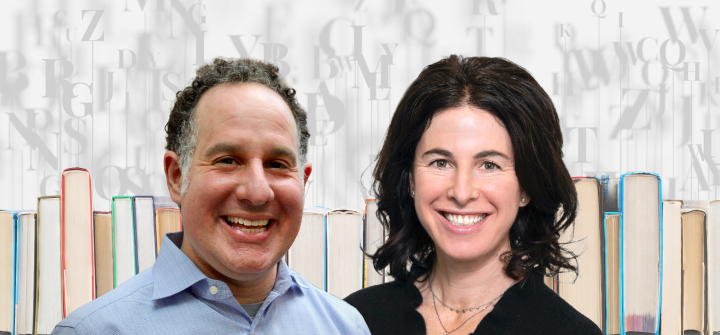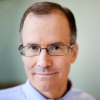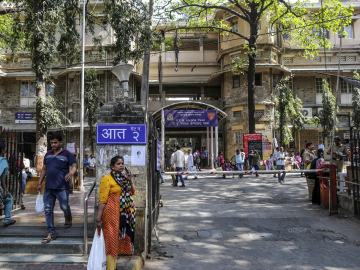Science Needs Storytelling: A Q&A with the Story Lab Team
Shortly before 8 p.m. on March 2, I looked through the rain-spattered glass of the Washington, DC convention center and spied a couple open seats in Room 103AB. My wife and I had just left the American Association for the Advancement of Science’s annual conference and faced a cold, wet walk back to our hotel. We postponed that stroll to enjoy the warmth of a remarkable storytelling event.
We were glad we did.
“Living Science: A Story Slam” was hosted by Jonathan Adler and Gillian Epstein, cofounders of The Story Lab at Olin College of Engineering. The pair had worked for weeks with 7 storytellers with diverse connections to science: a biomedical engineer, a philosopher and historian of science, a college student, the president of AAAS, and others.
Epstein, Adler, and the storytellers have graciously shared the stories for a 7-week series in Global Health NOW. To put the stories in context and to learn more about the storytelling’s connection to science, Epstein, a senior lecturer in English and writing innovation specialist at Olin College of Engineering, and Adler, a professor of psychology and playwright at Olin, responded via email to the following questions from GHN.
People don’t often think of storytelling when they think of science. Why should they?
JA: I’m so glad you started there, since my research is all about the science of stories. Stories are the tool that evolution has shaped for our species as we navigate our complex social niche. The renowned evolutionary biologist Stephen J. Gould defined humans as “primates who tell stories.” So, stories are, quite simply, the human adaptation. As a result, stories are the tool we use for communicating anything, science or anything else. Stories are what translate science from the lab to the world.
How should scientists involve storytelling in their work?
GE: Storytelling offers an iterative way for scientists to articulate for themselves and others why they care about their work—to think about why that work matters, and explore the values their work embodies. And science fundamentally needs scientists to wrestle with the values implicit in what they do, and to talk about those values as a community.
JA: Right! I think scientists need to work at becoming self-aware narrators of their work. Scientists often forget that once their work leaves the carefully controlled confines of the lab or the field, it becomes information for other people and communicating it inherently requires translation. Scientists and lay people speak somewhat different languages, so it’s worth thinking about this task of translation. (At the scientific journal I edit, every manuscript is required to have a scientific abstract and a public abstract, an intervention we started to get scientists thinking about the importance of translation.)
What’s storytelling’s superpower?
GE: Storytelling provides a magical shortcut to connection and empathy. It slices through clichés and small talk and lets folks instantly connect about moments that matter to them. And stories blaze a trail into memory like nothing else: long after we forget generalizations and assertions and hypotheses, we remember stories.
Any specific storytelling tips for people working in global public health?
JA: Yes! I work closely with a non-profit organization called Health Story Collaborative, where we’re very focused on elevating stories in the health care ecosystem, so this is something I think about. First, I’d encourage people in public health to resist the simple story. It’s too easy to collapse the complexity of people’s experience down to simple plotlines, which is rarely how our health experiences actually play out. And second, I’d encourage public health folks to become aware of their role in shaping cultural narratives around health. These narratives powerfully impact people’s individual experiences when they get sick, so it’s important to consider storytelling an important public health project.
At AAAS, I also attended your workshop, “Projects with Purpose: Telling Stories about Why You Care.” You did an interesting thing there: You had attendees list personal stories and professional stories. Then you asked us to think about connections between them. What’s your theory behind that?
GE: So glad you were at the workshop! When we coach others to make thematic connections that bridge their personal and professional stories, they begin to form a story not just for others but also for themselves about how their personal context matters in relation to their professional choices, values, and goals. It takes work to uncover and process how the personal informs the professional, and focusing on these connections makes space for that work. Articulating connections between personal and professional stories also helps folks engage with storytelling as an agential and iterative process: we can choose, play with, and revisit the thematic connections between our personal stories and professional focus. And it’s great that AAAS made space for scientists to do this!
Storytellers: Moisés Sabido García, John Dellorusso, Elizabeth Wayne, Gilda Barabino, Kelle Dhein, Logan Gin, Gillian Epstein, Jonathan Adler, and Quincy Brown. Image: Robb Cohen Photography & Video
Gillian, you teach English at an engineering college. Tell us about storytelling and your students. What’s surprised you most in this work?
GE: I have been surprised by how appealing storytelling feels to students who have very definitively set up camp in STEM. Just as much as any other students in any other discipline, engineering students deeply need to feel whole, to make sense of who they are and who they are becoming, and to build community. It has been incredibly gratifying to see them connect with storytelling as a way to connect with themselves and one another.
Jonathan, you’re a psychologist. Tell us about stories’ impacts on people.
JA: Stories are what weave us together as people. They make us feel like we are the same person across time and across situations and they ground our sense of purpose and meaning, and therefore our well-being. Stories are the integrating force in our very fragmented lives. And they do this work not only for individuals, but also for communities.
Last question for each of you. Tell us a story that reveals the power of story. You each have 100 words. Go!
GE: We’re breaking the rules of your question and co-narrating this story with 200ish words, because we engage with this work as a team and because rule breaking connects to the theme of the story we want to share…
JA: Okay, so back in 2018 we ran this big, all-day event for Olin College, in partnership with Emerson College, called Remaking Education, focused on catalyzing bold thinking about the future of education. In addition to the hands-on activities participants engaged in, we also had three storytelling sessions throughout the day. The storytellers were mostly Big Name folks - CEOs, renowned academics, etc. But we made sure to include one undergraduate student, Antonio Perez.
GE: And Antonio wasn’t just punching above his weight in terms of job titles; he was a natural introvert and had never told a story or spoken on a stage before. But Antonio volunteered to tell a story because he wanted to narrate his experience as a first generation student of color who felt disconnected from the everyday conversations taking place in the classrooms and hallways and grassy knolls of an elite college community. When we began working with Antonio, we told him the one rule for the storytelling was to make himself the main character. He instantly broke our rule, telling us that the one reason he was telling a story was to speak for his two roommates–also students of color–who dropped out of college because they didn’t feel like they belonged. “Their story is my story,” Antonio told us.
JA: Antonio’s redefinition of his singular identity as a collective identity helped us see that our seemingly flexible rule was already broken. So Antonio narrated his story not only from his own point of view, but from that of his ex-roommates and his immigrant parents. And, after a lot of drafting and a lot of rehearsal, Antonio stole the show. In the surveys we sent to the hundreds of participants after the event, 75% of them said that Antonio’s story was the highlight of the day. And then, one of the people in the audience invited him to speak on a panel at the National Science Foundation about better designing higher education systems with a focus on equity, alongside a college president and a super-famous Stanford professor. Just the three of them!
GE: So yes, the end of our story suggests that the power of story can catapult novice storytellers to high places. But it also shows us how crafting and sharing stories together provides a powerful means to reexamine the implicit or explicit rules in our academic practices, in our creative challenges, in our community events, and perhaps, in our newsletters ….
Read more “Living Science” stories here.
Join the 50,000+ subscribers in 170+ countries who rely on Global Health NOW summaries and exclusive articles for the latest public health news. Sign up for our free weekday newsletter, and please share the link with friends and colleagues.
Story Lab cofounders Jonathan Adler and Gillian Epstein. Illustration: Hitomi Kuromoto





